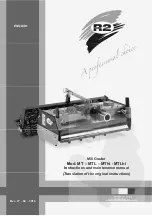
User’s Manual MSO/UPO2000 Seri es
53 / 137
Instruments.uni-trend.com
j.
Loss Confirmed
:
It will be generated on loss confirmed of CAN signal.
k.
Bit stuff error
:
In the segment that requires bit filling, the waveform will be triggered when
continuous detect the error from the same level of 6 bits.
(2)
Frame Format
It is valid when the trigger condition is “identifier” or “ID & data”, it can set to “standard format, extend
format”. Different frame format has different ID range value.
(3)
ID Value
It is valid when the trigger condition is “identifier” or “ID & data”. It can set ID value, the range is 000
~
7FF, 00000000
~
1FFFFFFF.
(4)
Operating Direction
It is valid when the trigger condition is “identifier”. And can set “read, write, read or write”.
a.
Write
:
It will be generated when the “read/write” bit of the CAN protocol is “write”.
b.
Read
:
It will be generated when the “read/write” bit of the CAN protocol is “read”.
c.
Read or write
:
It will be generated when the “read/write” bit of the CAN protocol is “write or read”.
(5)
Byte Length
It is valid when the trigger condition is “data” or “ID & data”. Set the length byte of data to be triggered
and the range is 1
~
8.
(6)
Data
Set the data to be triggered. It is valid when the trigger condition is “data” or “ID and data”, the length byte
of data is related to byte value and the range is 00
~
FFFFFFFFFFFFFFFF.
(7)
Decoding Setting
Quickly enter the entrance of CAN protocol decoding, refer to reference protocol decoding
7.18 CAN-FD Trigger
CAN-FD decoding trigger can set trigger condition, trigger coupling, trigger mode and trigger setting.
(1)
Trigger Condition
The CAN-FD trigger condition can set start frame, data frame, remote frame, error frame, overload
frame, identifier, data, ID and data, end of frame, loss confirmed and bit stuff error.
a. Start Frame: The oscilloscope will generate waveform on start frame of CAN-FD protocol.
b. Data Frame
:
The oscilloscope will be generate on data frame match with CAN-FD signal.
c. Remote Frame
:
It will be generated on remote frame.
d. Error Frame
:
The oscilloscope will be generated on error frame of CAN-FD signal.
e. Overload Frame
:
The oscilloscope will be generated on overload frame CAN-FD signal.
f. Identifier
:
The oscilloscope will be generated on data frame that matches the specified ID.
g. Data
:
It will be generated when CAN-FD protocol sampling data is consist with user-defined data. It
can help user can quickly find the transmission signal of the specific data that interested.
















































